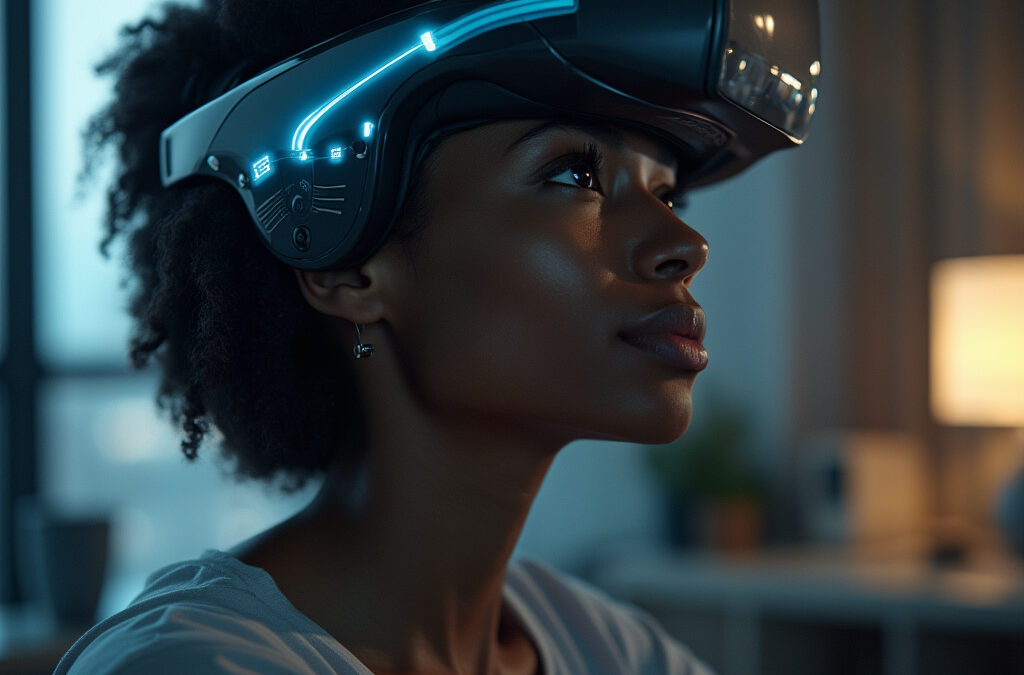Apple is pioneering a groundbreaking technology that could revolutionize the way people interact with devices—using only their thoughts. This innovation, known as brain-computer interface (BCI), aims to enable individuals with disabilities to control technology effortlessly.
BCI, or thought-detection technology, translates neural signals into digital commands. This allows users to perform tasks like typing or controlling smart home devices without physical interaction, offering newfound independence for those with limited mobility.
Apple’s commitment to accessibility is well-established, with features like VoiceOver and Eye Tracking already making a difference. Their exploration into BCI underscores a dedication to breaking down barriers for users with conditions such as ALS or cerebral palsy.
The technology likely involves non-invasive sensors and AI-driven software to decode brain signals, aligning with Apple’s focus on seamless integration with existing tools. This approach enhances their accessibility ecosystem, creating a comprehensive support network for diverse needs.
The potential impact is profound, empowering millions to regain control over their environment and communication. Apple’s leadership in this field not only improves individual lives but also sets a new standard for tech inclusivity, inspiring industry-wide innovation.
Apple’s thought detection technology is part of a broader strategy to enhance accessibility for users with disabilities. The company has already introduced features like Switch Control, which allows users to interact with devices using adaptive hardware, and Eye Tracking, enabling control through gaze. These tools have significantly improved accessibility, and the integration of BCI technology could further expand these capabilities.
The technology aims to assist individuals who cannot use their hands or have difficulty speaking, such as those with ALS, cerebral palsy, or spinal cord injuries. By translating neural signals into digital commands, Apple’s system could enable users to perform tasks like typing, opening apps, or controlling smart home devices with their thoughts.
While specific details about the technology remain under wraps, it is likely to involve a non-invasive headset or sensors to monitor brain activity. These signals would be interpreted by AI and machine learning algorithms, potentially integrated into Apple’s existing ecosystem of accessibility tools. This seamless integration could allow users to switch between different control methods, such as using Eye Tracking for some actions and thought detection for others.
Apple’s exploration of BCI technology reflects its commitment to creating a comprehensive accessibility ecosystem. The company has already made strides with features like Vocal Shortcuts, which allow users to assign custom phrases to specific actions, and enhanced speech recognition for individuals with atypical speech patterns. The addition of thought detection could provide another layer of independence for users with severe physical or verbal disabilities.
The potential impact of this technology extends beyond individual users, as it could set a new standard for inclusivity in the tech industry. By prioritizing accessibility, Apple is not only improving the lives of millions but also encouraging other companies to follow suit, driving innovation in assistive technologies.
Conclusion
Apple’s exploration of brain-computer interface technology represents a significant leap forward in accessibility innovation. By enabling users to control devices with their thoughts, Apple is paving the way for unprecedented independence for individuals with disabilities. This technology, combined with Apple’s existing accessibility features, underscores the company’s commitment to creating a more inclusive and empowering technological landscape. As Apple continues to push the boundaries of innovation, the potential to transform lives and set a new standard for the tech industry is both profound and inspiring.
Frequently Asked Questions
What is brain-computer interface (BCI) technology?
Brain-computer interface (BCI) technology is a system that translates neural signals into digital commands, allowing users to control devices using only their thoughts.
How does Apple’s thought detection technology work?
Apple’s thought detection technology likely involves non-invasive sensors and AI-driven software to monitor and decode brain activity, enabling users to perform tasks like typing or controlling smart home devices with their thoughts.
Who can benefit from Apple’s BCI technology?
Individuals with disabilities, such as those with ALS, cerebral palsy, or spinal cord injuries, who may have limited mobility or difficulty speaking, can benefit from this technology.
What other accessibility features has Apple introduced?
Apple has introduced features like VoiceOver, Switch Control, Eye Tracking, and Vocal Shortcuts to enhance accessibility for users with disabilities.
Is Apple’s BCI technology currently available?
As of now, Apple’s BCI technology is still in the exploratory phase, and specific details about its release have not been announced.
How does BCI technology integrate with Apple’s existing tools?
The technology is expected to seamlessly integrate with Apple’s ecosystem of accessibility tools, allowing users to switch between different control methods like Eye Tracking and thought detection.
What is Apple’s commitment to accessibility?
Apple is committed to creating a comprehensive accessibility ecosystem, with the goal of breaking down barriers for users with disabilities and setting a new standard for inclusivity in the tech industry.

